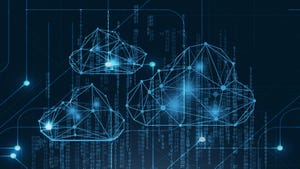
Insight and analysis on the data center space from industry thought leaders.
Reducing the Storage Footprint & Power Use in Your Data Center
When space is tight and storage costs are mounting, deduplication is a method to squeeze more out of current data center space, according to Eric Bassier of Quantum.
March 11, 2013
Eric Bassier is Director of product marketing at Quantum. He has over 11 years of experience in the storage industry, with a focus on data protection and archiving.

Eric-B-Quantum-tnjpg
ERIC BASSIERQuantum
I was talking with a company based in Manhattan, and they told me that they have maxed out their data center’s power usage. They simply cannot get more power. And because of the constraints of city real estate, they can’t add square footage to their data center - there’s nowhere to grow. Moving their data center off the island is an option (and long-term plan), but clearly reducing the footprint of storage in their data center and minimizing power consumption are important factors, as they would be for any IT investment. Although Manhattan has some unique challenges in this area, IT departments in many metro areas are facing similar problems. Data center floor space requirements and power consumption costs are both increasing and becoming important factors for all of us.
When it comes to storage and data protection, there are a couple of key technologies that can dramatically reduce storage footprint and power consumption.
Deduplication
Deduplication technology is now mainstream, especially as it is applied to backup storage and disaster recovery. Deduplication - especially variable length deduplication - enables users to store 20 to 50 times more data in the same disk space as standard disk storage. As with all industries in IT, deduplication appliances continue to improve their disk density, with some vendors now offering appliances using 3 TB hard drives, which can further reduce storage footprint and reduce power consumption. A purpose-built deduplication appliance using 3 TB drives can reduce power by as much as 50 percent compared to a similar appliance using 2 TB drives.
As power consumption and the amount of spinning disk is reduced, power and cooling costs both decrease as well.
Cloud Storage, Backup, and DR
One of the interesting things about deduplication is that it is a great "engine" for reducing data set sizes before replicating that data over a WAN. This makes deduplication a perfect technology for getting data into the cloud. Some vendors are now offering cloud-based storage, backup and disaster recovery services. Moving storage away from metro areas (with expensive real estate, expensive power and a high cost of living for IT staff) to data centers in different geographic regions will continue to be a driving trend for IT in the future.
Tape
Talking about cloud, many companies continue to use tape the way that many cloud providers are using tape – as the lowest cost storage medium with the lowest power requirements. To many, tape always seems to be on the brink of death, but in reality tape continues to have the lowest acquisition cost, and for long term data storage the power and cooling costs are extremely low.
Just like the disk drive industry, tape densities continue to improve to enable businesses to reduce their data center footprint. The latest generation of tape media, LTO-6, can store over 6 TB of data on a single cartridge not much larger than a smartphone. With advancements in the storage densities of tape libraries, users can store multiple PBs of data on tape in less than a full rack of space.
If reducing data center footprint and power consumption is a concern, consider exploring and investing in these technologies. With the smart management of data storage, my friend may be able to postpone his move from the Big Apple.
Industry Perspectives is a content channel at Data Center Knowledge highlighting thought leadership in the data center arena. See our guidelines and submission process for information on participating. View previously published Industry Perspectives in our Knowledge Library.
About the Author
You May Also Like




.jpg?width=300&auto=webp&quality=80&disable=upscale)




